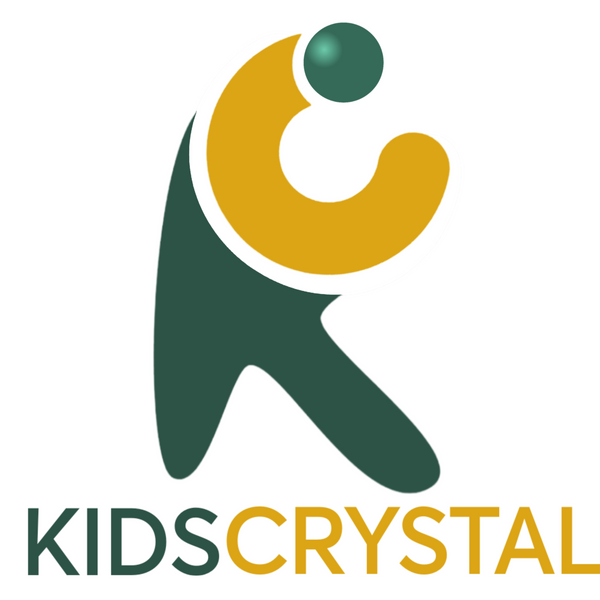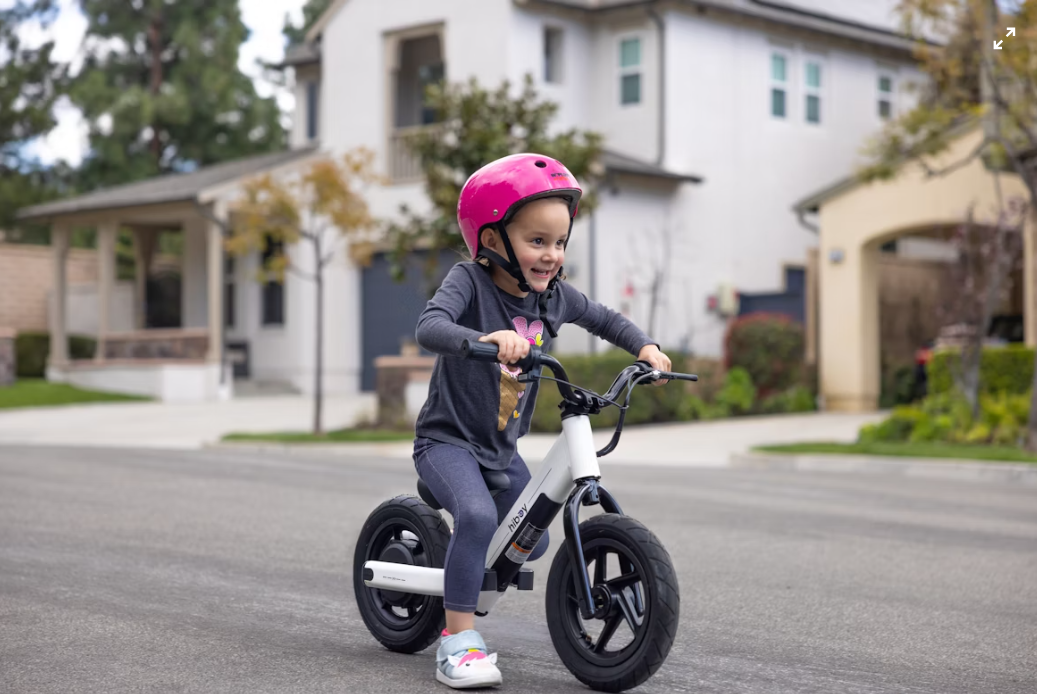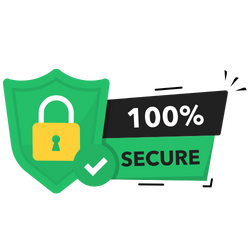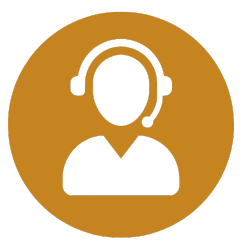Key Takeaways
• Balance bikes are ideal for children aged 1-5 years and help develop coordination naturally
• No pedals or training wheels needed - kids learn by pushing with their feet and gliding
• Choose the right size by ensuring your child can place both feet flat on the ground while seated
• Start as early as 12-18 months for maximum benefit and smoother transition to pedal bikes
• Safety first with proper helmet, knee pads, and supervised riding in safe environments
• Quality matters - invest in adjustable, lightweight bikes that grow with your child
When it comes to helping your little one develop essential riding skills, a balance bike offers the perfect introduction to cycling. Unlike traditional bikes with training wheels, balance bikes teach children the fundamental skill of balancing naturally, making the eventual transition to a pedal bike seamless and confidence-building.
At Kids Crystal, we understand that choosing the right balance bike for your toddler or child can feel overwhelming with so many options available. This comprehensive guide will walk Canadian families through everything you need to know about balance bikes, from determining the right age to start, to selecting the perfect size and ensuring safe riding experiences.
When Do Kids Start Using Balance Bikes?
Ideal Age Range for Balance Bikes (1 to 5 Years Old)
The beauty of balance bikes lies in their versatility across age groups. Most children can begin using balance bikes between 12-18 months, with the optimal learning window extending until age 5. This wide age range makes balance bikes an excellent long-term investment for growing families.
For younger toddlers (1-2 years), balance bikes serve as walking toys that gradually introduce the concept of steering and momentum. As children develop stronger leg muscles and better coordination, they naturally progress to lifting their feet and gliding - the core skill that makes transitioning to pedal bikes so much easier.
Canadian families often find that starting early with balance bikes gives their children a significant advantage when winter weather limits outdoor activities. During warmer months, kids can practice extensively, building confidence and skills that carry over year after year.
Toddler Balance Bike for 12–36 Months - Adjustable Seat, Removable Basket, 4 Wheels
Signs Your Child Is Ready to Ride a Balance Bike
Recognizing when your toddler is ready for their first balance bike involves observing several key developmental milestones:
Physical readiness indicators:
- Walking confidently for at least 2-3 months
- Ability to run and maintain balance while moving
- Leg strength to support their body weight while straddling a bike
- Coordination to steer while walking
Mental and emotional readiness signs:
- Shows interest in wheeled toys or watching others ride bikes
- Follows simple instructions and understands basic safety concepts
- Demonstrates patience for new learning experiences
- Expresses excitement about "big kid" activities
Remember that every child develops at their own pace. Some 15-month-olds may be ready for a balance bike, while others might benefit from waiting until 20-24 months. Trust your parental instincts and observe your child's individual development patterns.
How Do Balance Bikes Work for Toddlers and Kids?
Developing Balance and Coordination Skills
The concept is beautifully simple yet incredibly effective. Balance bikes eliminate pedals, chains, and training wheels, allowing children to focus entirely on the most crucial aspect of cycling: balance.
Children begin by walking while straddling the bike, using their feet to propel themselves forward. As confidence builds, they naturally start taking longer strides, eventually lifting their feet for brief gliding moments. This progression happens organically, without forced instruction or parental pushing.
The learning process typically unfolds in these stages:
- Walking phase - Child walks while seated, getting comfortable with steering
- Scooting phase - Longer strides with feet pushing off the ground
- Gliding phase - Brief moments with both feet up, experiencing balance
- Confident gliding - Extended periods of balance and steering control
This natural progression builds genuine confidence and muscle memory that translates directly to pedal bike success. Most children who master balance bikes can ride pedal bikes without training wheels within days or weeks of making the transition.
Choosing the Best Balance Bike for Toddlers and Kids
Balance Bikes for 1 Year Olds and 2 Year Olds: What to Look For
Balance bikes for 1 year olds and balance bikes for 2 year olds require specific features to ensure safety and success for these youngest riders. The most critical consideration is proper sizing, but several other factors matter tremendously.
Essential features for youngest riders:
- Ultra-low seat height (typically 10-12 inches from ground)
- Lightweight construction (under 8 pounds when possible)
- Wide, stable wheelbase for enhanced stability
- Puncture-proof tires to minimize maintenance
- Rounded edges and smooth finish to prevent injuries
- Simple, tool-free adjustments for growing children
Safety considerations for toddlers:
- Look for bikes with steering limiters to prevent over-steering
- Ensure handlebars have soft grips and protective end caps
- Choose models with footrests positioned for natural leg placement
- Verify that all bolts and connections are secure and child-safe
The Kids Crystal balance bike collection offers carefully curated options specifically designed for Canada's youngest riders, taking into account our unique climate and terrain challenges.
Baby Balance Bike for 1-2 Years Old Boys & Girls No Pedal 4 Wheels
Best Balance Bikes for 3 Year Olds, 4 Year Olds, and 5 Year Olds
As children grow, their balance bike needs evolve significantly. Balance bikes for 3 year olds, balance bikes for 4 year olds, and balance bikes for 5 year olds can accommodate more advanced features and larger frames.
Features for older preschoolers:
- Adjustable seat heights ranging from 14-20 inches
- Hand brakes to develop braking skills for pedal bikes
- Air tires for better traction and smoother rides
- More robust frame construction to handle increased speeds and rougher play
- Longer wheelbase for stability at higher speeds
Advanced learning features:
- Some models include removable pedal systems for gradual transition
- Gearing options for older children ready for more complexity
- Suspension systems for comfort on varied terrain
- Quick-release seat adjustments for rapid height changes
Older children often prefer balance bikes that look more like "real" bikes, with sporty designs and vibrant colors. They're also capable of handling more sophisticated features like hand brakes, which provide excellent preparation for eventual pedal bike riding.
Kids No Pedal Balance Bike with Adjustable Handlebar and Seat-Red
Practical Sizing Advice: How to Measure and Adjust the Bike
Proper sizing makes the difference between a positive balance bike experience and a frustrating one. Here's how to ensure the perfect fit:
Measuring your child:
Inseam measurement - Have your child stand barefoot with legs slightly apart
- Measure from floor to crotch - This determines minimum seat height needed
- Add 1-2 inches for comfort and proper leg extension
- Consider growth - Ensure adjustment range accommodates 6-12 months of growth
Proper fit indicators:
- Both feet should rest flat on ground while seated
- Slight bend in knees when feet are down
- Comfortable reach to handlebars without stretching
- Ability to straddle bike with both feet on ground
Common sizing mistakes to avoid:
- Buying too large "to grow into" - this creates safety issues and learning difficulties
- Ignoring handlebar height - should be roughly waist-level when standing beside bike
- Forgetting about weight - bike should be light enough for child to pick up and maneuver
Regular adjustments are essential as children grow quickly during these developmental years. Most quality balance bikes offer tool-free seat adjustments, making it easy to maintain proper fit throughout your child's balance bike journey.
Benefits Over Traditional Training Wheels
Traditional training wheels create a false sense of security while actually hindering balance development. Children become dependent on the extra wheels, often struggling when it's time to remove them. While balance bikes offer significant advantages, it's important to understand both the benefits and limitations of each approach to make an informed decision.
|
Aspect |
Balance Bikes |
Training Wheels |
|
Advantages |
• Develop true balance skills from day one • Lower center of gravity for increased stability • Lighter weight for easier handling • No mechanical complexity to distract from learning • Smooth transition to pedal bikes without training wheels • Build confidence through natural skill progression • Better for varied terrain navigation |
• Immediate pedaling practice • Faster initial riding experience • Can ride longer distances from start • Less intimidating for very cautious children • Work on any bike with standard mounting • Allow focus on steering and pedaling together |
|
Disadvantages |
• Higher initial investment cost • Limited speed and distance capability • Learning curve can frustrate some children • Shorter usage period before outgrowing • No pedaling skill development • Requires more active parental supervision • Weather-dependent for optimal learning |
• Create dependency on artificial support • Don't teach actual balancing skills • Can tip over unexpectedly on uneven surfaces • Heavier and more cumbersome to transport • Often require a scary "removal" process • May significantly delay pedal bike mastery • Can damage bike frames over time |
For Canadian families dealing with varying terrain and weather conditions, balance bikes prove especially valuable. They're easier to carry indoors during harsh weather and simple enough for young children to handle independently.
Safety Tips and Setup for Balance Bikes
Proper Seat Height and Handlebar Adjustment
Setting up your child's balance bike correctly is crucial for both safety and learning success. How high should a balance bike seat be? The seat should be positioned so your child can place both feet flat on the ground while seated, with a slight bend in their knees.
Step-by-step setup process:
- Initial seat height - Start with seat 1-2 inches below your child's inseam measurement
- Test sitting position - Child should comfortably reach ground with entire foot
- Handlebar adjustment - Set handlebars at roughly the same height as the seat
- Steering check - Ensure handlebars turn smoothly without binding
- Brake setup (if applicable) - Adjust brake levers for small hands
How to adjust the seat on a balance bike varies by model, but most modern bikes feature quick-release mechanisms or simple allen key adjustments. Always double-check that seat posts are properly secured after adjustments, as loose seats create serious safety hazards.
Regular maintenance checks:
- Verify all bolts are tight before each ride
- Check tire pressure weekly (for air-filled tires)
- Inspect handlebars for any looseness or damage
- Ensure brakes function properly (when present)
- Clean bike regularly to spot potential issues early
Safe Riding Environments and Protective Gear
Creating safe learning environments helps children build confidence while minimizing injury risks. Canadian families have unique considerations given our climate and terrain variations.
Ideal practice locations:
- Smooth, flat surfaces like empty parking lots or basketball courts
- Gentle slopes for natural momentum building
- Grass areas for initial practice (softer landings)
- Bike paths and sidewalks for more advanced riders
- Indoor spaces during harsh weather (large basements, community centers)
Essential protective gear:
- Properly fitted helmet - most important safety investment
- Knee and elbow pads - especially valuable for beginners
- Closed-toe shoes with good grip - never sandals or flip-flops
- Long pants to protect legs from scrapes
- Bright, visible clothing for outdoor riding safety
Weather considerations for Canadian families:
- Avoid icy or wet conditions that increase fall risks
- Use indoor alternatives during extreme weather
- Consider seasonal storage to protect bike components
- Dress children in layers for temperature regulation during outdoor rides
Supervision guidelines:
- Always supervise children under 4 years old
- Maintain close proximity during initial learning phases
- Gradually increase independence as skills develop
- Teach traffic awareness early, even in safe practice areas
Ready to find the perfect balance bike for your little one? Explore the complete Kids Crystal balance bike collection to discover high-quality options designed specifically for Canadian families. From ultra-lightweight models for 1-year-olds to advanced bikes for 5-year-olds, we have the perfect balance bike to start your child's cycling journey.
Visit Kids Crystal today to browse our full selection of children's bikes and accessories, all designed with safety, quality, and fun in mind.
FAQs
1. What is a balance bike?
A balance bike is a pedal-free bicycle designed to teach young children balance and steering skills. Also known as run bikes, glide bikes, or push bikes, these simple yet effective learning tools allow children to propel themselves using their feet while learning to balance and steer. Balance bikes typically feature adjustable seats, lightweight frames, and either air-filled or solid tires, making them perfect first bikes for toddlers and young children.
2. How to teach a toddler to use a balance bike?
Teaching a toddler to use a balance bike should be a patient, encouraging process:
- Start with exploration - Let your child examine and sit on the bike without pressure
- Begin with walking - Encourage walking while straddling the bike
- Practice steering - Guide them in gentle turns while walking
- Celebrate small wins - Praise any forward movement or steering attempts
- Encourage longer strides - Gradually suggest bigger steps forward
- Let gliding happen naturally - Don't force foot-lifting; it will occur when they're ready
- Make it fun - Keep sessions short and enjoyable, ending on positive notes
Remember that every child learns at their own pace. Some may glide within days, while others need weeks or months to build confidence.
3. How high should a balance bike seat be?
The balance bike seat height should allow your child to place both feet flat on the ground while seated, with knees slightly bent. This position provides maximum control and confidence while learning. As a general rule, measure your child's inseam and set the seat 1-2 inches lower than this measurement. The seat should never be so high that your child must tiptoe or stretch to reach the ground, as this creates instability and fear.
4. How to adjust the seat on a balance bike?
Adjusting the seat on a balance bike depends on your specific model, but most follow these general steps:
- Locate the adjustment mechanism - Usually a quick-release lever or allen bolt under the seat
- Loosen the clamp - Turn counterclockwise or flip the quick-release lever
- Adjust height - Raise or lower seat to the desired position
- Align seat properly - Ensure seat points straight forward
- Tighten securely - Close quick-release firmly or tighten bolt completely
- Test stability - Push down on seat to verify it won't slip during use
Always check that adjustments are secure before each ride, as loose seats can cause accidents and injuries.





